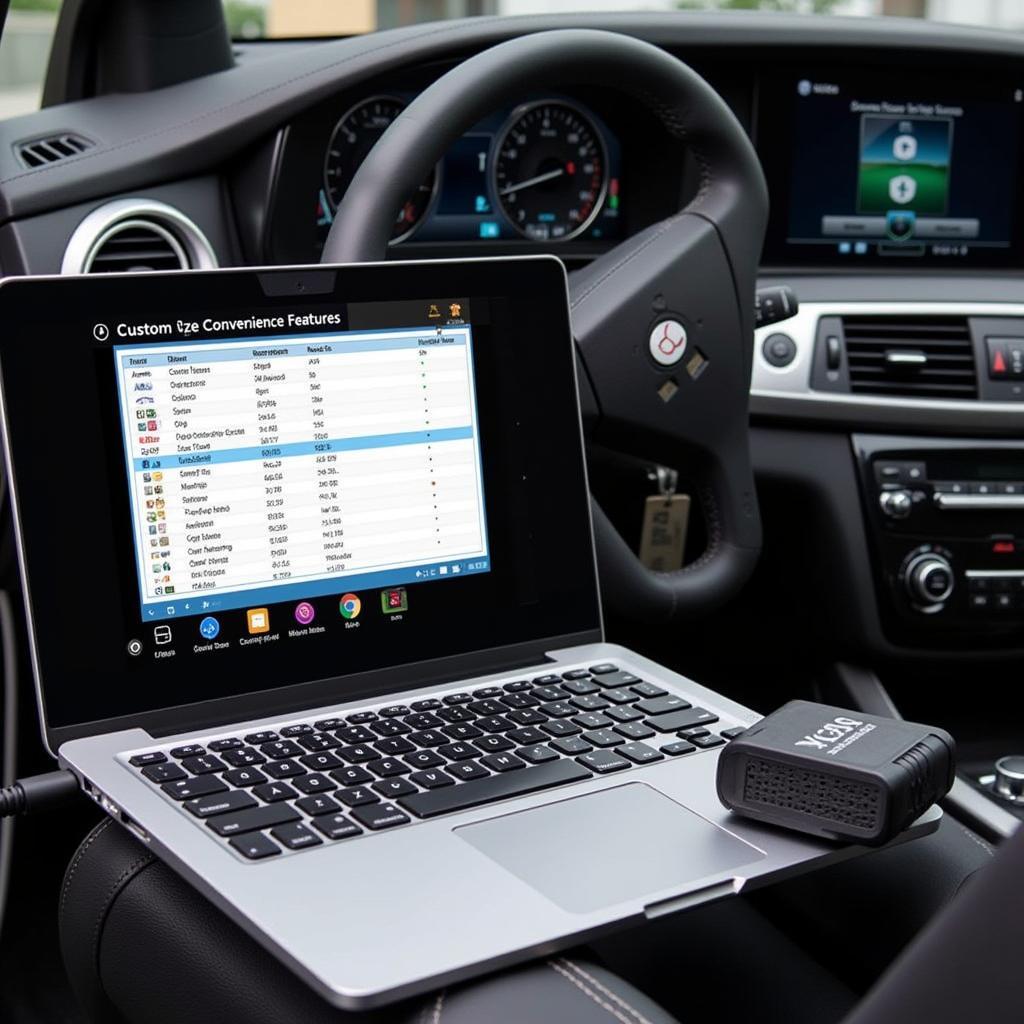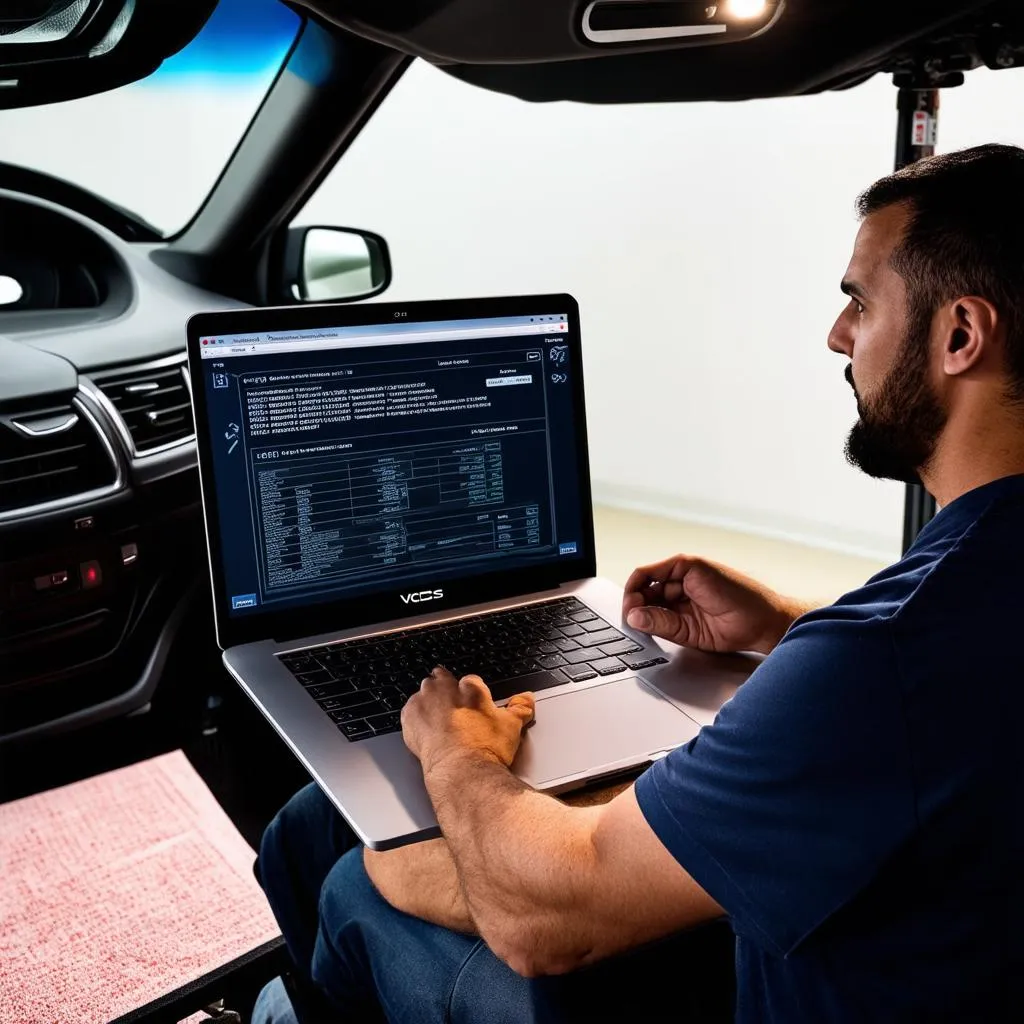VCDS hacks offer a fascinating way to unlock hidden features and customize your vehicle’s settings. From tweaking convenience features to accessing diagnostic data, VCDS (VAG-COM Diagnostic System) empowers owners and technicians to delve deeper into their car’s systems. This article explores the world of VCDS hacks, covering their potential benefits, risks, and ethical considerations. Let’s dive in!
 Accessing Hidden Features with VCDS Hacks
Accessing Hidden Features with VCDS Hacks
What Are VCDS Hacks?
VCDS hacks involve using the VCDS software to modify a vehicle’s control modules. These modifications can range from simple tweaks, like enabling automatic door locking, to more complex adjustments, like changing the behavior of the transmission. It’s essential to understand that these hacks can impact your car’s warranty and even its safety if not performed correctly. Therefore, proceed with caution and thorough research.
Do you want to enable hidden convenience features? Many VCDS hacks focus on improving the usability of your vehicle. For example, you can activate coming home lights, change the behavior of the daytime running lights, or adjust the sensitivity of the rain sensor.
Understanding VCDS and Its Capabilities
Before diving into VCDS hacks, it’s crucial to grasp what VCDS is and how it works. VCDS is a diagnostic software that connects to your vehicle’s onboard computer through the OBD-II port. It allows you to read and clear fault codes, monitor sensor data, and, yes, perform coding changes. These coding changes are what many refer to as “VCDS hacks.” You can learn more about VCDS diagnostics at our vcds diag page.
Accessing Diagnostic Data with VCDS
VCDS provides access to a wealth of diagnostic information, allowing you to troubleshoot issues and monitor your vehicle’s health. [01826 vcds supply voltage terminal 30](https://cardiagtech.shop/01826-vcds-supply voltage-terminal-30/) is a common error code that can be diagnosed and potentially fixed using VCDS. While not a hack, understanding this diagnostic capability is essential for any VCDS user.
“VCDS is a powerful tool that allows car enthusiasts and professionals alike to gain deeper insights into their vehicles,” says John Miller, an automotive electrical engineer with over 20 years of experience. “However, it’s important to use it responsibly and understand the potential implications of any modifications.”
Popular VCDS Hacks
Convenience and Comfort Enhancements
Many VCDS hacks focus on improving the everyday usability of your car. Examples include:
- Needle Sweep: Enabling the gauge needles to sweep upon starting the engine.
- Automatic Locking: Setting the doors to automatically lock when the car reaches a certain speed.
- Window Roll-up with Remote: Allowing the windows to roll up by holding the lock button on the remote.
Performance Tuning and Adjustments
Some VCDS hacks delve into performance-related settings, though these should be approached with extreme caution. Examples include:
- Throttle Response: Adjusting the throttle response curve for a more responsive feel.
- Shift Points (Automatic Transmission): Modifying the shift points for improved performance or fuel economy.
Remember, modifying performance-related settings can void your warranty and negatively impact your vehicle’s reliability if done incorrectly. For detailed information on coding changes, check out our vcds long coding guides.
Risks and Ethical Considerations
While VCDS hacks can be appealing, it’s essential to be aware of the potential risks:
- Voiding Warranty: Modifying your car’s settings can void your warranty, especially if the changes are related to emissions or safety systems.
- Damaging Control Modules: Incorrect coding can damage control modules, leading to costly repairs.
- Safety Concerns: Certain modifications can impact safety features, potentially putting you and others at risk.
“It’s important to remember that VCDS is a powerful tool, and with great power comes great responsibility,” advises Maria Rodriguez, an automotive diagnostics expert. “Always research thoroughly before making any changes, and be prepared to reverse them if necessary.” Furthermore, understanding your vcds battery voltage is crucial for any successful VCDS operation.
Conclusion
VCDS hacks offer a unique way to personalize your car and access hidden features. However, it’s crucial to proceed with caution and understand the potential risks. Thorough research, careful execution, and ethical considerations are paramount for a positive VCDS experience. Remember, using VCDS responsibly can unlock your vehicle’s hidden potential without jeopardizing its warranty or safety.
FAQ
-
What is VCDS?
VCDS is a diagnostic software used to access and modify a vehicle’s control modules. -
Are VCDS hacks legal?
The legality of VCDS hacks depends on the specific modifications and local regulations. -
Can VCDS hacks void my warranty?
Yes, certain VCDS hacks can void your warranty. -
What are the risks of VCDS hacks?
Risks include voiding the warranty, damaging control modules, and impacting safety features. -
Where can I learn more about VCDS hacks?
Online forums and communities dedicated to VCDS can provide valuable information. -
How can I avoid damaging my car with VCDS hacks?
Thorough research and careful execution are essential to avoid damaging your car. -
Is it ethical to use VCDS hacks?
The ethics of using VCDS hacks depend on the specific modifications and their impact on safety and emissions regulations.
For any further assistance, please contact us via Whatsapp: +1 (641) 206-8880, Email: [email protected] or visit our office at 276 Reock St, City of Orange, NJ 07050, United States. Our customer support team is available 24/7.


